 [Photographer and writer Herman LeRoy Emmet (January 21, 1943-November 4, 2021) died on November 4 at Columbia Presbyterian Hospital in New York City after a lengthy illness. He was 78.
[Photographer and writer Herman LeRoy Emmet (January 21, 1943-November 4, 2021) died on November 4 at Columbia Presbyterian Hospital in New York City after a lengthy illness. He was 78.
Herman studied with me in the MFA photography program at the Maryland Institute, College of Art (MICA) in the early 1970s. He went on to exhibit and publish internationally. In 1988, Life magazine featured Emmet’s “Fruit Tramps” series in a 6-page spread, and he received the Top Photo Essayist award in the “Pictures of the Year” contest co-sponsored by the National Press Photographers Association and the University of Missouri School of Journalism.
I had the pleasure and privilege of writing the introduction to the subsequent monograph, Fruit Tramps: A Family of Migrant Farmworkers (Univ. of New Mexico Press, 1989), which got nominated for a Pulitzer Prize in 1990. Subsequently, I included an excerpt from that project in a group show I curated for Houston Fotofest International 1990, “Testimonies: Photography and Social Issues.”
(The other photographers in that survey: Marilyn Anderson and Jonathan Garlock, Julio Mitchel, Eugene Richards, Sebastian Rodriguez and Fran Antmann, Lonny Shavelson, and Linda Troeller. Some of the images, and excerpts from the curatorial wall texts I wrote to contextualize these projects, appeared in a feature article that occupied most of a “Special Social Documentary Issue” of the magazine Camera & Darkroom published in October 1991.)
Herman had served in Vietnam as a U.S. Army intelligence officer prior to starting his work in photography. By the mid-1990s he had begun to experience the early symptoms of what in 2010 finally got diagnosed as a full-blown case of Parkinson’s Disease, probably attributable (as with so many veterans of that disastrous undeclared war) to exposure to Agent Orange. Over time it rendered him unable to continue photographing and eventually wheelchair-bound, requiring full-time care.
In early 2015 he and his wife Elaine commissioned me to inventory and organize his archival materials, which I accomplished in stages over the course of that year. We had several goals in mind, including the placement of his work (especially the “Fruit Tramps” project materials) in an appropriate repository and identifying a younger photographer to take over the project and extend it longitudinally, by documenting the lives of the children and grandchildren of Linda and L. H. Tindal. Alas, to date we have achieved neither of those desiderata.
Shortly thereafter Herman moved to a veterans’ hospital in Florida, which provided him with the best available care. By that time he was painting steadily, and had begun to show that work. In recent years he participated in Brooklyn Waterfront Artists Coalition exhibitions that helped raise funds for Team Fox’s Parkinson Research. (100% of the profits from sales were donated to the Michael J. Fox Foundation.)
In 2019, selected photographs from “Fruit Tramps” were exhibited at the Key West Photography Festival and he was presented with a Lifetime Achievement Award. Emmet attended the event with his wife Elaine and gave a 45-minute talk about the “Fruit Tramps” project. You can view a video of that presentation here.
Here’s an article from the 1990s in which Herman talks about the project and his efforts to update it. Selected images from “Fruit Tramps,” and samples of his painting, appear at his website. And here’s the Wikipedia entry on him and his work. — A.D.C.]
•
Trampling Down the Vineyards:
Herman Emmet’s “Fruit Tramps”
How do you tell a story that’s already been told so often that no one listens to it anymore? One way is to dig down into the story, down to some deeper level of experience, emotion and symbol — to cease merely witnessing and begin instead to bear witness to the rock-bottom truths of your tale, the things that matter, the stuff that endures.
That’s not easy to do, especially not nowadays. It requires abandoning fashionable notions of contingency and relativism, turning away from the chic posture of ironic detachment. It means letting go of the prevalent conceit that you can “reinvent documentary” from SoHo lofts and the groves of academe. It involves believing in something, committing to it, and being willing to get your hands dirty with the muck of what truly concerns you.
The tale Herman Emmet tells us in Fruit Tramps is, on several levels, a familiar one. The best-known renditions of it are John Steinbeck’s The Grapes of Wrath and Edward R. Murrow’s “Harvest of Shame,” but others (Marion Palfi, Dorothea Lange and Paul Schuster Taylor, and Paul Fusco among them) have given us classic alternate versions. Certainly no reasonably informed citizen nowadays can pretend to ignorance of the fact that fruit and vegetable pickers sit way below the salt at this culture’s tables — when they’re allowed into the dining hall at all.
Yet, despite such recurrent and sympathetic attention to their plight, little has changed over the past century. The migrant agricultural workers are still invisible to us. Whether treated as fictions or statistics, they themselves have remained ciphers, generic “stoop labor,” flesh-and-blood servomechanisms whose existence is assumed but unquestioned. Herman Emmet’s strategy here — radical in its simplicity — is to deny us the comforting insulation of that distance by plunging us abruptly and at length into the daily lives of some real people who do this work: the Tindals — L.H., Linda, Tina Michelle and Shannon — and their extended family.
•
The immersion is salutary, for it forces us to see them in all their fullness. The world of the Tindals, their relatives and friends is not romanticized here. Yet despite their hand-to-mouth existence and often desperate circumstances, these are surely not hopeless, loveless or joyless people. Neither pathetic nor apathetic, they are instead intelligent and articulate. In fact, to a considerable extent they’ve chosen to live as they do, turning away from other options that offer more stability and security. What they ask for is not revolution, merely reapportionment — the right to a share of the profits from their labor, a share just large enough to enable them to live decent working-class lives.
Emmet’s painful awareness of the marginality of the Tindals’ situation does not blind him to the degree to which they’ve determined their own destiny. Nor does that recognition convince him to ignore the flashes of magic in their daily experience — for part of what he seeks to reveal is that humans have the capacity to make the most (and sometimes, somehow, even more than that) of whatever hand is dealt to them by others or by themselves.
•
What Herman Emmet so obviously believes in, like L. H. and Linda Tindal, is the bedrock of family and the binding power of love. L. H. and Linda dote on their children, rely on (and are relied on by) their strongly-woven network of kin and close friends, are clearly devoted to each other and maintain what seems like a remarkably egalitarian, non-sexist partnership. (Theirs is, in fact, a topsy-turvy version of that 1980s dream, the two-career marriage, with both spouses working side by side and sharing the household chores. It seems to be working better than most marriages I know.)
So there are really two stories intertwined here: a socio-political narrative of marginalization and economic exploitation, and a family chronicle of survival under duress and the surmounting of hardship. These tales do not contradict or negate each other, but they do mitigate and complexify what otherwise might be taken for granted. In short, they force us to both feel and think on two levels simultaneously. Which is exactly what Emmet had in mind.
•
I’ve known Herman Emmet since his days at the Maryland Institute, College of Art in Baltimore. He studied there with a close colleague of mine, Richard Kirstel, and was part of a graduate seminar I ran as a visiting lecturer. That seems an age ago. Now he’s a mature, full-fledged working photographer who’s produced an important piece of work. Fruit Tramps is a serious exploration of a significant subculture within the rapidly growing North American underclass; at the same time, it is also a powerful first-hand account of some exemplary lives lived in that milieu.
I’ve followed Emmet’s work on this project from its early phases on. He subjected this testament to an elaborate critical/self-critical process during the years of its making. The end result is a first-rate example of social-documentary photography, in the tradition of the Walker Evans-James Agee collaboration, Let Us Now Praise Famous Men.
•
Emmet’s photographic style is of course different from Evans’s: the intimacy, informality, and fluidity the small camera makes possible are evident here. The photographs are rich in information — about gesture, body language, facial expression, interpersonal relations, environment. Yet they’re unforced, unposed, and alive with feeling; it’s as if the viewer were privileged to look over the shoulder of someone who’s a member of this crowd.
To some extent, this is because Emmet has cultivated a kind of unobtrusiveness that the best documentary photographers achieve. But in large part this is due to Emmet’s having photographed not as an outsider but from the participants’ perspective, seeing and describing their world from the vantage point of one who, though not from their world, has worked, sweated, eaten and slept alongside them.
The world of the Tindals appears here as a microcosm, a self-contained universe. Except by implication, as in the images made at the supermarket and in the dentist’s office, there’s no one present but family and friends. According to the photographer, this isolation accurately reflects the segregation (some of it self-imposed) that separates fruit tramps from the larger society. Emmet’s acceptance of this restricted cast of characters involves sacrificing breadth for depth. The breadth — general pictorial surveys of the migrant condition — can in any case be found elsewhere. But the depth (including the extended chronological frame, almost a decade) is unprecedented.
•
As a result, the complexity and richness of the Tindals’ situation can unfold itself, all in good time. Their lives are shown as immersed in the physical world — dependent on their own bodies and wits for day-to-day survival in a struggle for the basics: food, shelter, clothing, medical care, transportation. The toll that this hardscrabble existence takes on them — exhaustion, premature aging, recurrent illness and major dental problems — is visible in Emmet’s images, and carefully observed.
All the same, and due perhaps to that very physicality, they seem to inhabit their world fully, adults no less than children. They take pride in their work, pleasure in their play, joy in each other, and they let it show. From the pictures, one can see something of what attracts the Tindals to the picker’s life, what binds them so tightly to their own condition. One can also sense how even this nomadic, uncertain life could be an extraordinary adventure to children who know they’re deeply loved.
Emmet is not so seduced by the Tindals’ vitality that he loses his critical distance. The irony of [the image that shows] L. H. stepping out at night from the decrepit shell of a Future Farmers of America tour bus to take a leak is deliberate and sharp. Yet he is not so appalled by their problems that he fails to notice their vitality, their affection, their general competence at making do. Such qualities are not easily revealed by photographs; it’s a tribute to Emmet’s commitment to the Tindals, and their consequent trust of him, that they disclose themselves to us so unself-consciously through his lens.
•
What is most surprising about the Tindals, at least to me, is their thoughtful awareness not only of their own lives and choices but of the larger political context that to a considerable extent determines their condition. This understanding is not within photography’s power to make manifest, but it is central to Emmet’s purpose, which is to show these people as neither dry instances nor broken victims but, instead, as fully human beings.
For that reason, his description of them is not only imagistic but textual. I think it’s important to note that Emmet considers this book, as a whole, to be (as he says, quietly and in passing, in his preface) “a work of literature.” Though that is still not a claim we’re accustomed to hearing for a book so involved with photographs, there are certainly precedents for it — in addition to the Agee-Evans collaboration, we have the image-text works of the team of Margaret Bourke-White and Erskine Caldwell, Wright Morris and quite a few others. It strikes me as a reasonable assertion in this case, for Emmet is surely a storyteller.
He lays no claim to being a major stylist; his is a blunt, clean prose, spare as the lean lives he describes. Unlike Agee’s, his writing is only rarely poeticized; but it has the resonance and authority of experience in its tones. The language of his characters is rendered straightforwardly; Emmet’s own accounts and observations are thoughtful, understated, yet clearly grounded not only in research but in his own time spent living with his protagonists.
•
Of this involvement Emmet says, “The major issues of migrant life — such as its effect on the lives of children — do not reveal themselves quickly. You need more material to tell the full story. So I had to learn to see this as a long-term project, like what I imagine to be the process of sitting down to write a novel. Hemingway,” he continues, “saw his experience as a journalist as preparation for his fiction. But he knew the difference: a true narrative takes time. So this isn’t photojournalism in the usual sense; I watched myself cross over into something that I have no other word for but literature.”
The resonant tone of this book as a whole is a result of that “crossing over,” Emmet’s decision to commit himself to his sense of the story’s internal time frame. It creates a context of credibility, giving his version of this North American saga a weight and value it could otherwise not achieve. And I think the images and text are of a piece, integral — that, in mood, tone, and awareness they complement and enhance each other, living up to L. H.’s requirement that the tale be told “true blue.”
In my opinion, this book serves its subjects well. I’m speaking of both its subjects: the specific people whose lives it describes, and the migrant-labor caste they represent. The individuals are served by being treated as such; they are given their own names and voices, the chance to tell their stories and make their case, the opportunity to present themselves to a culture that chooses not to see them. The caste of which they’re part (and the snarl of issues implicated in that caste’s situation) is served through Emmet’s persistent integration of the particular and the general — his subtle but determined contextualizing of one family’s story within a broader social/political/economic frame, and his simultaneous insistence that the overview not neglect the specific human consequence of institutional forces.
•
I also think the project serves the medium of photography, as an unpretentious, non-bravura reminder of what serious, prolonged inquiry can achieve within a traditional form when undertaken by someone devoted enough to the subject to learn it from the inside out before picking up the camera. Obviously, it helps to have that be someone unconcerned with aesthetic fashion, who recognizes the limitations of photographs and the utility of words, and is not afraid to function as a storyteller.
Herman Emmet’s models, I know, are Agee-Evans and W. Eugene Smith, among others. This work emerges from that lineage, extends the thrust of those seminal efforts, and deserves to stand in their company. But it certainly is not of interest exclusively to those concerned with serious photography, who may well prove to be only a small segment of its audience. Like the best work of those people I’ve just named, Fruit Tramps is a substantial and deeply moving statement that I suspect will be found valuable by people in other disciplines; I also think it may find a surprisingly sizable readership among the general public.
Indeed, if I could express a hope for this book, it would be simply that it might find its way into the hands of all who are committed to a responsible relation to those who bring to our table the food that nourishes us. If that could be managed, perhaps it would bring us, like Emmet, to our feet beside the Tindals — enough of us so that at long last we might trample down the vineyards where the grapes of wrath are stored.
— A. D. Coleman
Staten Island, New York
May 1989
•
This post supported in part by a donation from Arthur Ollman.
•
 Special offer: If you want me to either continue pursuing a particular subject or give you a break and (for one post) write on a topic — my choice — other than the current main story, make a donation of $50 via the PayPal widget below, indicating your preference in a note accompanying your donation. I’ll credit you as that new post’s sponsor, and link to a website of your choosing.
Special offer: If you want me to either continue pursuing a particular subject or give you a break and (for one post) write on a topic — my choice — other than the current main story, make a donation of $50 via the PayPal widget below, indicating your preference in a note accompanying your donation. I’ll credit you as that new post’s sponsor, and link to a website of your choosing.
And, as a bonus, I’ll send you a signed copy of my new book, poetic license / poetic justice — published under my full name, Allan Douglass Coleman, which I use for my creative writing.


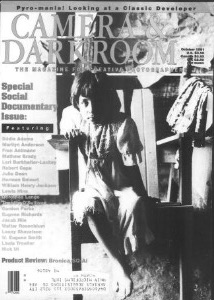
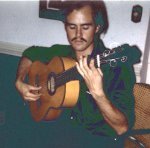
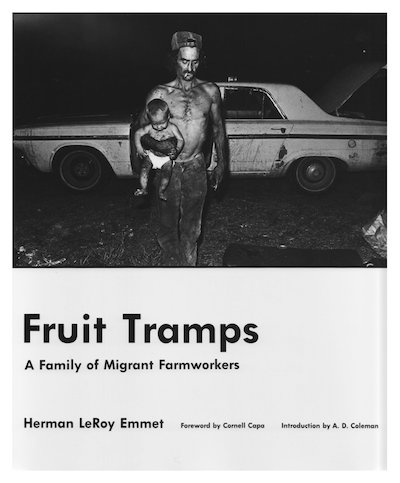
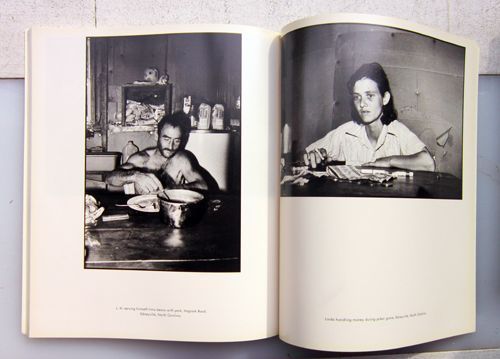
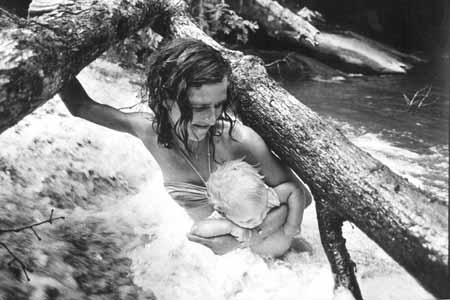
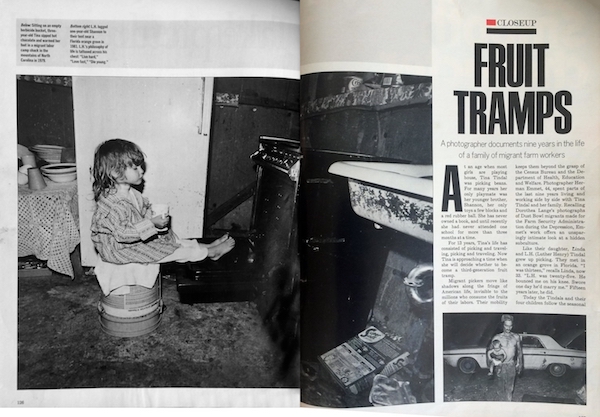
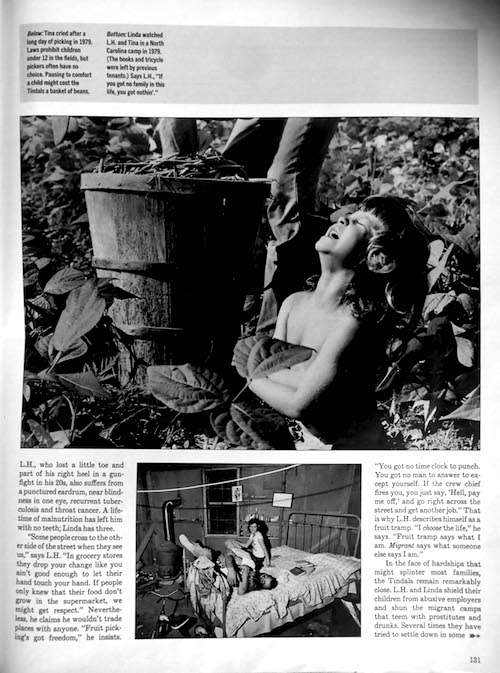
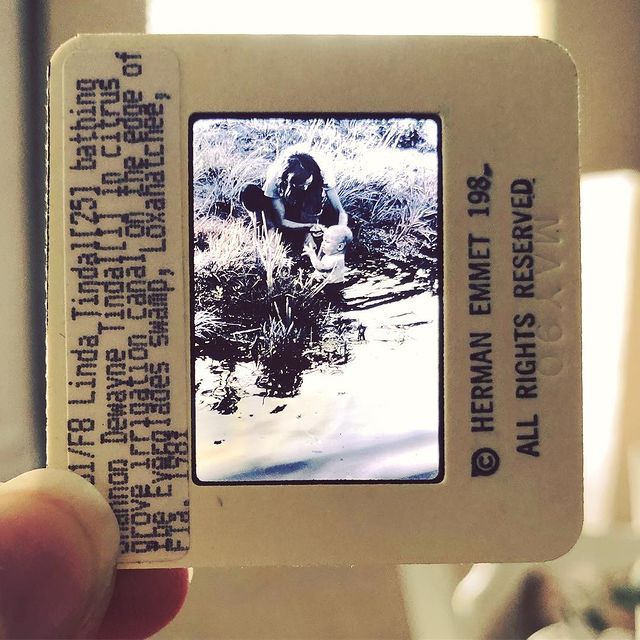
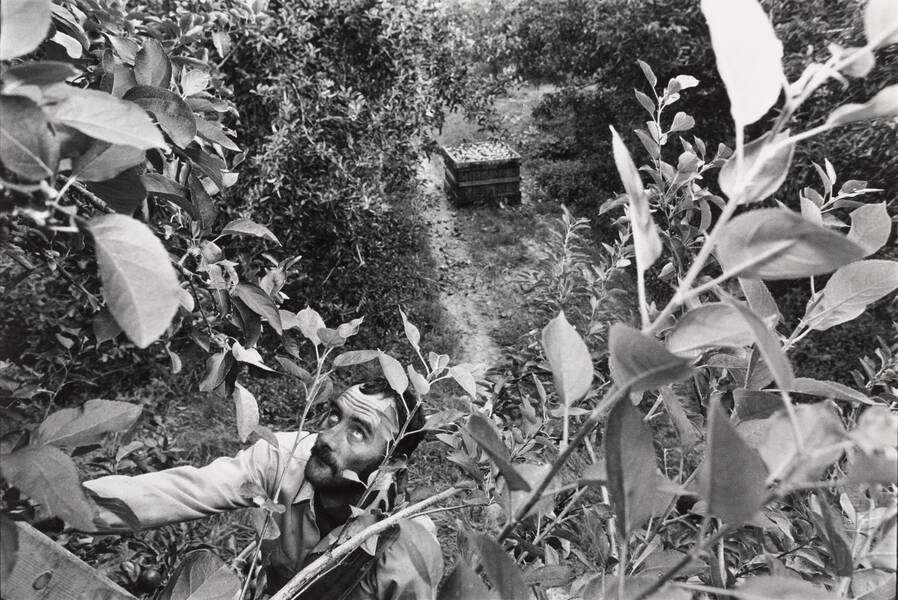
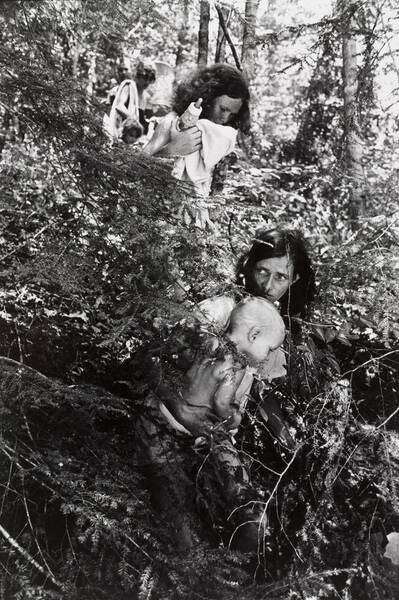
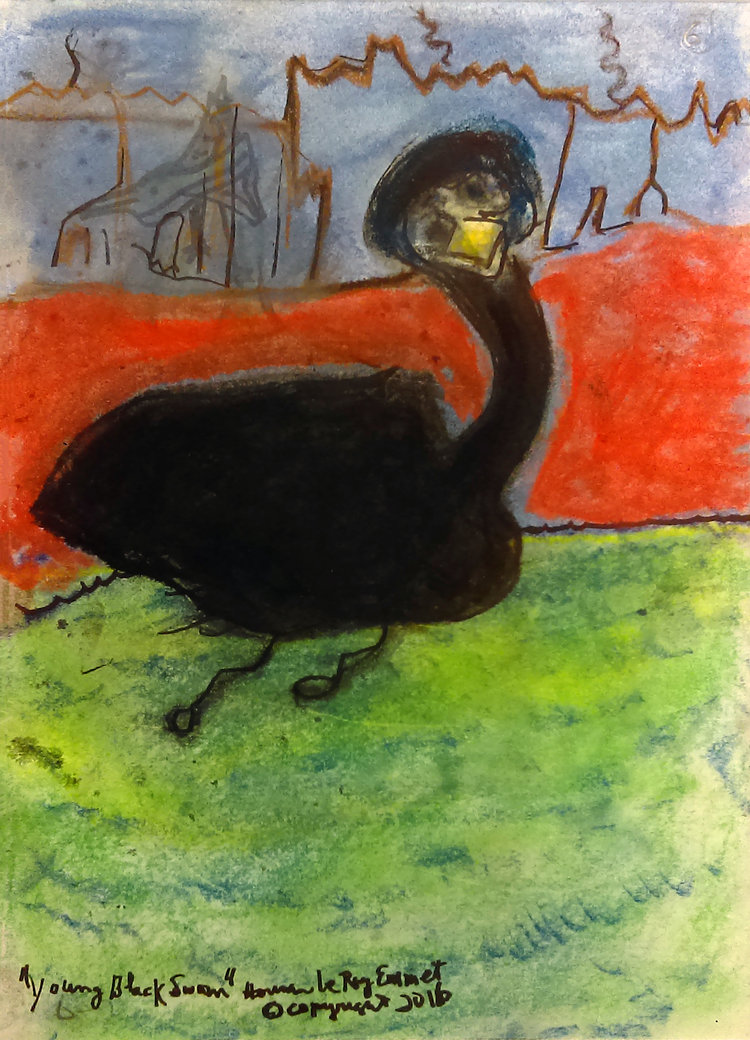




Thanks, I will look up this photo essay.
I’m sorry to learn of Herman’s passing. I first met him probably at some event you were involved with, Allan – possibly a party at someone’s apartment. It was so long ago that my record of him in my database doesn’t have a creation date. He was a very bright and engaging presence.
My condolences to his family and friends and all who knew him.
Stephen Perloff
That was a party for me that Herman and his wife Elaine hosted in Manhattan in 1989, celebrating my return to writing a weekly column about photography for a New York-based paper (the New York Observer).
Thanks for this article.
I’ve first read about the Tindals story in a German magazin in the early 1990s. I forgot about their names or the photographer, and for around 30 years I had the story about this family in my head, always wondering what happpened to the fruit pickers…
Last night I had luck on my google search, using the right words I found the book and immediately remembered the cover image. I especially remember their oldest daughter (Shannon), as she was in my age back then and I always thought that this could have been my life.
Now hear comes the tradegy that its not mentioned in the article above.
Emmeret tried to catch up with the family later (I think 1995), L.H. had already cancer at this time and there was nothing they could do. Luther died in early 1996.
Lind had a car crash with 4 of her younger children in Dec. 1996, all of them death. She crashed into a an empty school bus.
And also Shannon passed away 3 years later in Sep. 1999. No reason giving. Thinking about her age (19) and the last story I remember from her (at the age of 15-16) she already abused drugs at a young age.
Still 4 more kids have had been alive in 1999 (Tina for example)
See for more details:
https://www.findagrave.com/memorial/79412217/linda-inez-tindal
This whole story is so sad and even more tradegy. I wonder if they every think about making a movie out of this families story.
I am just sad right now and had to share my thoughts with someone reading this.